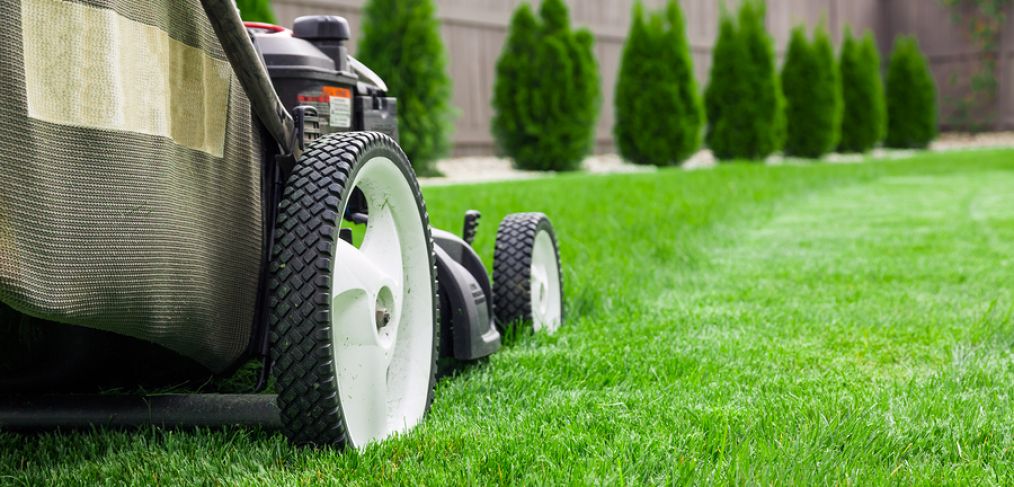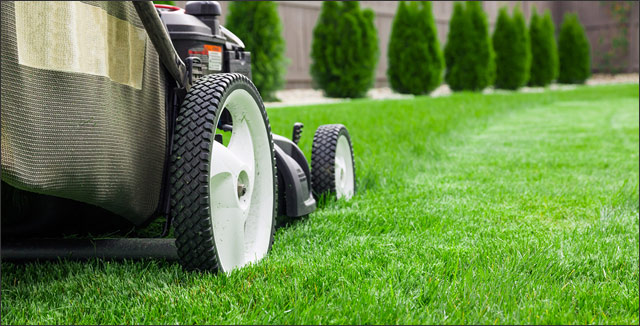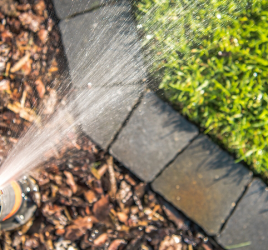
Lawn Care Tips: 7 Techniques You’ll Want to Know
March has arrived and spring is just around the corner. After a long cold winter, we are sure you are as excited as we are to see some green peak through and that you are anticipating getting outside. Depending on what area of the country you live in, spring might feel like it has already arrived.
Regardless of where you live, one perfect way to make your yard look incredible is by having a strong, healthy, and bright green lawn. According to Lowes, “A beautiful lawn starts with preparation and selecting the right grass. Proper lawn maintenance keeps your grass growing and looking its best.”
Basic Lawn Care Tips
Here are 7 basic lawn tips that will help you get started to having a resilient lawn that will look great all spring and summer long.
Tip 1: Choose the Right Type of Grass
If you are looking to put in grass to your yard, you will want to make sure to select the best grass possible for your climate. Here are a few options according to Lowes that have been proven to be great options for a cold climate and for a warm climate. A cool climate will be any climate that has temperature that drops below freezing.
Cool Climate Grass:
- Bluegrass
- Perennial ryegrass
- Tall Fescue
- Fine Fescue
Warm climate Grass:
- Bahia
- Common Bermuda
- Hybrid Bermuda
- Centipede
- Zoysia
The zones that run through the middle of the country are areas that are considered a transition zone for grasses. A combination of cool and warm climate grasses can work, but typically cool seasons have done the best.
Tip 2: Test Your Soil
One vital part in starting any gardening project, is to make sure your foundation is at its best. That means that when you are planning to plant your grass you want to make sure that the soil is the best quality possible. It can be helpful to perform a soil test. A soil test will be able to tell you what nutrients your soil is lacking or maybe has too much of. You can buy a home soil test kit at your local garden store.
Tip 3: Sow in Early Spring
There are a few different options that might cause you to ask when to add more seeds. For example, you might want to start a new patch of lawn. Or, you might want to add more seeds to your existing lawn to help maintain. When you are planning to put your seed in to grow grass, you will want to plant the seeds in early spring or in early fall. You can also choose to fertilize in early spring or late summer and fall.
Tip 4: Wear the Proper Gear
When you choose lawn care products, make sure to wear the proper clothes and protective equipment like gloves and glasses. Some products can have hazardous chemicals. Follow the directions listed on the product you choose and you should be good to go.
Tip 5: Use the Right Tools
When spreading seeds on your new lawn, the most cost effective option would be to use your own hands. The problem with using your own hands is that seeds will not evenly spread throughout the lawn. There can be patches where there are more seeds in one area then another.
Using a tool like a push lawn spreader is a great option. The spreader is a simple tool that allows you to place the seeds or the fertilizer inside the bucket, and then the blade spreads it out evenly as you push it forward. A push spreader can range in price. No need for anything crazy, just enough to get the job done.
Tip 6: Mowing Basics – No Buzz Cuts
While we won’t go into the full ins and outs to mowing your new amazing, green, and lush grass, we will hit a few basics here. The first being – no buzz cuts. When you mow your lawn, one of the biggest mistakes homeowners will make when mowing is to give your new lawn a giant buzz cut.
The problem is that when you cut your lawn too short, you leave risk leaving it ugly blown patches and uneven ground and strained roots. According to Popular Mechanics, Pat Callahan, the director of grounds, landscaping, and turf at Delaware Valley College in Doylestown Pennsylvania, stated when cutting your grass too short, “This leads to weeds breaking through the turf.” For grasses that are cool-season you want to cut t 2 ½ to 3 ½ inches. For warm-weather climates, cut your grass from 1 to 3 inches to receive the best results.
Another great mowing basic to adhere by is to take your time. When you mow, make sure to not to rush the mow. According to Popular Mechanics, “A rushed job leads to uneven shearing and leaves behind clumps if poorly mulched clippings.” The goal is to take your time, and don’t rush. Your lawn will thank you for it.
Tip 7: Keep Your Eyes Ahead
One last mowing tip is to keep your eyes 10 feet ahead of you. When you look directly down at your wheels you won’t be able to see where exactly you are going. This will lead to uneven lines. When you mow, make sure not to look down, and look ahead of you, your lines and your lines will look straight and beautiful.
Wrapping it Up
Spring is just a few short weeks away. Having a healthy lawn is one of the best ways that you can do to make your yard look amazing. Whether you are looking to improve your existing lawn or creating a new lawn all together, now is the time to get started.
Making sure you choose the right type of grass for the climate you live in will be the first step to take to create a beautiful lawn. Then, test your soil, add seeds in the early spring, wear the proper gear, use the right tools, and practice some mowing basics. Before you know it, you will have a beautiful green lawn that will make you feel proud.
Your Turn
What is the top lawn care tip that you have used to take care of your lawn? Please let us know in the comments below.




